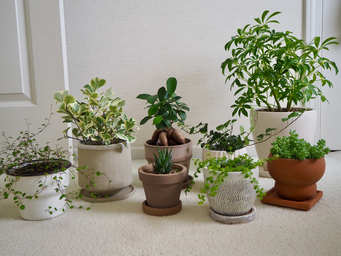Picture this: you go out shopping with your friends and notice the cutest little plant that’s supposed to be good for beginners. You think, “This would look so cute hanging down my bookcase!” So you buy the plant, bring it home, and begin watering it every day. A couple of weeks go by and you’ve given your all to this plant and yet…the leaves are drooping, turning brown, and looking pretty sad. What’s going on?
Even the most loving of first-time plant-parents fail on keeping their plants alive, but the answer to why your plants are dying may be very simple: you’re watering it too much! Overwatering is actually the number one cause of house plant deaths — but don’t let this deter you! Watering your plants is quite literally a science, and with a little practice and balance, you’ll be feeding your plants perfectly in no time!
- Water Schedule
-
We’re starting with a pretty hard and complicated tip, but over time it’ll get easier! The first step in this tip is to do some research on your new plant. Sometimes the plants will come with little informational cards to tell you how much light and water it needs, but more often than not, you’re left on your own.
Most basic house plants for beginners actually don’t take that much water at all. A good rule of thumb is to water your plants every one to two weeks, and stick to it! You can’t underwater it one week or overwater it the next – that stresses the plant out! So it’s a good idea to set a reminder in your phone to check if your plants need watering.
- Check for Moisture
-
I know it’s easy to say, “only water your plant when it needs it” but how do we really know whether the plant is ready for more water or not? A really easy practice that I call “the knuckle trick” tells you exactly when you should be giving your plant water. It’s super simple: all you have to do is stick your finger into the soil (usually in between the actual plant and the rim of your pot) up to your first knuckle. If you feel any moisture at all (or if a lot of dirt is sticking to your finger after pulling it out): don’t water it! The roots are already surrounded by moisture which means it’s not going to be thirsty; giving it any more water will essentially drown it.
- Drainage
-
What revolutionized my water habits, especially for those bigger houseplants, was creating drainage for the plants! This is a really important step because if there isn’t proper drainage, all the water will sit at the bottom of the pot and soak the roots through.
There are two ways you can incorporate drainage and it depends on the size of the plant to decide which type to use. For bigger plants, you should use a system of rock draining. Basically, this just means putting a bunch of rocks at the bottom of your pot, then put in the soil, and then the plant itself. This will allow all the water to drain through the rocks rather than sit in the bottom of the soil.
For smaller plants, it’s best to double pot. The first smaller pot is what your plant will be in, and then put that pot in a slightly larger pot. Make sure the small pot with the plant has holes in the bottom to allow the water to drain into the second pot!
- Amount of Water
-
Now let’s answer the age-old question: how much water do I use to water my plants? This step also depends on the size and type of plant. However, generally, there are two easy tricks to use to ensure you’re not overwatering.
For larger plants, you should water it until the water pools on top of the soil. Let it drain into the soil, and do let it pool an additional time. This usually is the best practice for my large plants and lets them get water to the bottom of their roots!
For smaller plants, take out the smaller pot (remember – the one with holes in it?) and water the plant until you see the water start to dribble out of the holes at the bottom of the pot. Once that happens, let the water drain out of the holes until it stops, and voilà!
These are my general rules and tips for watering house plants and hopefully they help you keep your plants stay healthy! Just remember, all plants are different and take various amounts of water. Now go buy some houseplants!


